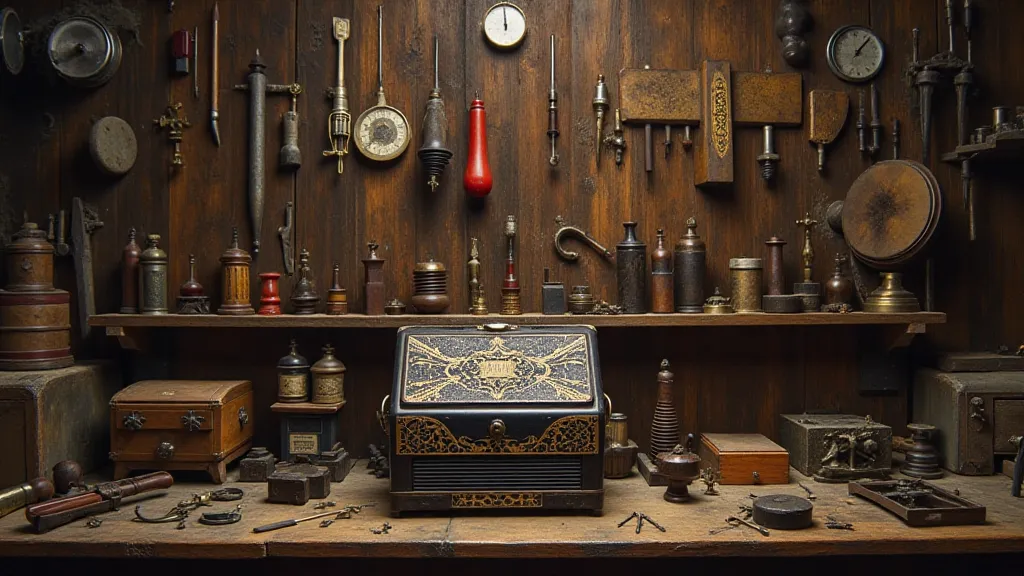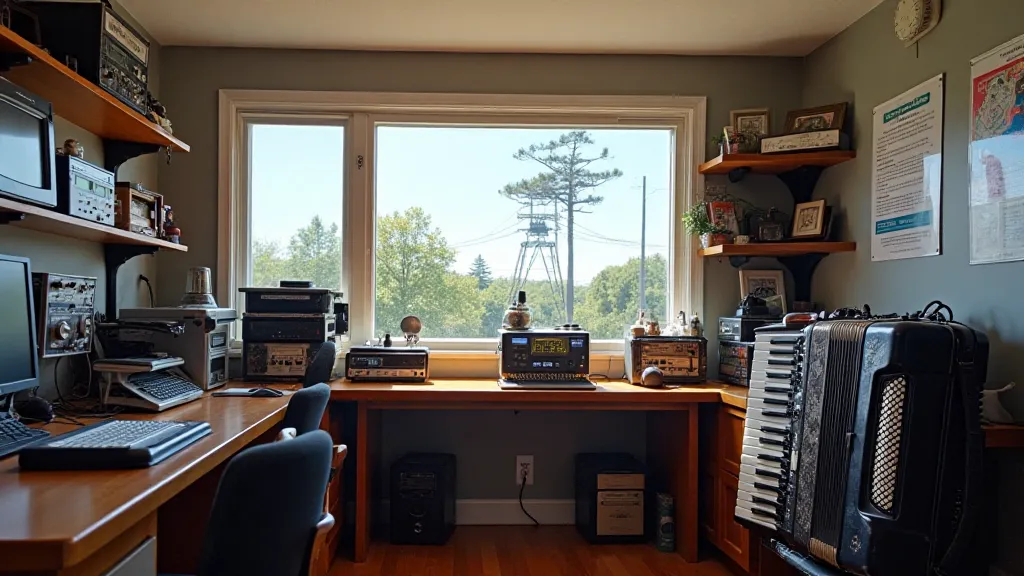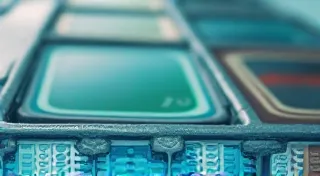Aetheric Tapestry: Combining Multiple Antennas for Enhanced Performance
There's a profound satisfaction in crafting something with your own hands. A tangible connection to a process, a lineage of ingenuity. I often think about this when I’m working on my ham radio antennas, and it's a feeling remarkably similar to the one I get when meticulously restoring an antique accordion. These instruments, complex mechanisms of bellows, reeds, and keys, represent a bygone era of craftsmanship. Each button feels weighted with history, each carefully placed reed a testament to a dedication rarely seen in modern manufacturing. The act of bringing one back to life – the careful cleaning, the subtle tuning – evokes a reverence for the maker's skill. Similarly, building an antenna isn't just about electronics; it's about understanding and respecting the principles of radio waves, a modern form of craftsmanship in its own right.
The pursuit of better signal reception and transmission is a constant thread in the amateur radio hobby. While a single, well-designed antenna is a solid foundation, sometimes that simply isn't enough. Geographical limitations, interference, or the need to access specific frequencies can push us to explore more sophisticated techniques – techniques that involve combining multiple antennas. This isn't a recent invention, of course. Early radio experimenters, facing similar challenges, pioneered many of the concepts we use today.

The Allure of Beamforming
Beamforming, at its core, is about focusing radio energy. Imagine throwing pebbles. One pebble goes in a straight line. Now, imagine throwing multiple pebbles at once, aiming them slightly differently. When they all arrive at a target, the impact is much stronger. That's the principle behind beamforming. In amateur radio, this is achieved by using multiple identical antennas, carefully spaced and phased. This phasing – subtle adjustments to the timing of the signals – causes the waves to constructively interfere in a specific direction, creating a focused “beam.”
The spacing between the antennas is critical and depends on the frequency you’s be using. A common rule of thumb is roughly half a wavelength. Consider a 2-meter antenna array, where the wavelength is around 15 centimeters. The spacing would need to be meticulously calculated and implemented. Early beam antennas – Yagis, Quads – were often built using painstaking manual adjustments. Modern techniques can incorporate motorized phasing, allowing for remote beam steering. While more complex, the ability to dynamically adjust the beam direction opens up tremendous possibilities for accessing distant stations and mitigating interference. The precision required in antenna design extends beyond just calculations; it involves a deep understanding of material properties and how they influence signal propagation – a concept we delve into more detail in our piece on Resonance and Rupture: Antenna Material Science for the Amateur.
Diversity: Redundancy and Resilience
Diversity, in contrast to beamforming, prioritizes signal reliability. The concept is simple: multiple antennas receive the same signal, but from slightly different locations. This overcomes the problem of fading and multipath interference. Think of it like this: If one antenna is blocked by a building, another might have a clear line of sight. Combining the signals from both improves the overall signal-to-noise ratio.
There are several types of diversity systems. Spatial diversity, using physically separated antennas, is the most common. Polarization diversity utilizes antennas with different polarization orientations (vertical and horizontal, for example). Frequency diversity uses two antennas tuned to slightly different frequencies, exploiting the fact that fading rarely affects both frequencies simultaneously. A particularly elegant approach combines spatial and polarization diversity for a robust and reliable setup. For those operating in urban environments where space is at a premium, careful consideration must be given to low-profile designs – something we cover extensively in our article on The Silent Sentinel: Low-Profile Antenna Designs for Limited Spaces. Selecting the right antenna design isn't just about maximizing signal strength, but also about adapting to the unique challenges of your location.
Beyond the Basics: Array Variations
The beauty of amateur radio is its adaptability. The basic principles of beamforming and diversity can be combined and modified in countless ways. For instance, a "daisy chain" antenna system uses a series of antennas, each contributing a small portion of the signal. This can effectively increase gain and improve front-to-back ratio without requiring excessive space. Log-periodic antennas, a staple in the ham radio world, are essentially arrays of individual elements, each tuned to a specific frequency. The gradual change in element size and spacing provides broad bandwidth performance.
A fascinating aspect of antenna design, and one that resonates with the meticulousness of accordion restoration, is the constant need for fine-tuning. Just as a single reed in an accordion can throw off the entire sound, a single improperly aligned element in an antenna array can drastically reduce its performance. The process often involves a lot of patience, careful measurement, and a willingness to experiment. This kind of hands-on learning is invaluable and connects you directly to the history of radio experimentation. The feel of a well-tuned antenna is as satisfying as the sound of a perfectly restored bellows. Understanding the interplay of frequencies and materials is key to achieving optimal performance, which ties directly into the considerations we outlined in our exploration of Resonance and Rupture: Antenna Material Science for the Amateur, examining how different materials impact signal behavior.

Understanding the Principles
Behind every successful antenna array lies a solid grasp of the underlying RF principles. While complex mathematical models can be used to predict performance, a basic understanding of wavelength, impedance, and phase is essential. The concept of impedance matching, ensuring the antenna’s impedance is compatible with the transmitter’s impedance, is critical for efficient power transfer. A mismatch can result in reflected power, damaging the transmitter and reducing signal strength.
This ties directly into the history of radio. Early experimenters, lacking sophisticated test equipment, often relied on intuition and experience. They learned to “listen” to the equipment, observing its behavior to diagnose problems. That same spirit of inquiry is alive and well in the amateur radio hobby today. Building an antenna isn't just about following a set of instructions; it’s about understanding *why* the instructions work. And for those in urban areas needing to maximize signal strength despite limitations, consider the techniques explored in our article on The Architect of Signals: UHF Antenna Building for the Urban Landscape. Successfully deploying an antenna in a densely populated environment demands ingenuity and a deep understanding of signal propagation.
A Harmonious Blend: Craft and Science
Combining multiple antennas for enhanced performance is more than just a technical exercise. It’s a testament to the ingenuity of amateur radio operators, a fusion of craft and science. Just as the artisan painstakingly assembles an accordion, paying attention to every detail, the antenna builder must embrace the principles of radio wave propagation and meticulously construct a system that meets their specific needs. The result isn't just a more efficient antenna; it's a deeper appreciation for the beauty of radio technology and the legacy of those who came before us. The nuances of antenna design, from material selection to phasing techniques, underscore the importance of a holistic approach – a principle we also highlighted in our article on the science of resonance and rupture.
The feeling of accomplishment after successfully constructing and tuning a multi-antenna system is hard to describe. It’s a combination of technical satisfaction, creative expression, and a connection to the vast and fascinating world of radio communication. It is a journey into a tangible, aetheric tapestry woven from dedication, innovation, and a love for the hobby. And like a perfectly restored accordion, it’s a testament to the enduring power of human creativity.

The pursuit of optimal antenna performance is a continuous journey, demanding a blend of theoretical knowledge and practical experimentation. Beyond the core principles of beamforming and diversity, advanced techniques such as adaptive beam steering and digital signal processing offer exciting possibilities for future innovation. As technology advances, the role of the amateur radio operator will evolve, requiring a deeper understanding of complex systems and a willingness to embrace new challenges. The legacy of early experimenters, who painstakingly built their own equipment with limited resources, continues to inspire us to push the boundaries of what’s possible. Ultimately, the joy of amateur radio lies not only in the ability to communicate across vast distances but also in the satisfaction of creating something with your own hands – a tangible connection to a lineage of ingenuity that spans generations.
Furthermore, the impact of external factors, such as atmospheric conditions and solar activity, cannot be ignored. Understanding these phenomena and their influence on radio wave propagation is crucial for optimizing antenna performance and achieving reliable communication. Continuous monitoring and adaptation are essential for navigating the ever-changing radio environment. The principles of antenna design, while rooted in scientific theory, are ultimately shaped by the practical realities of the hobby – a testament to the enduring power of human ingenuity.





